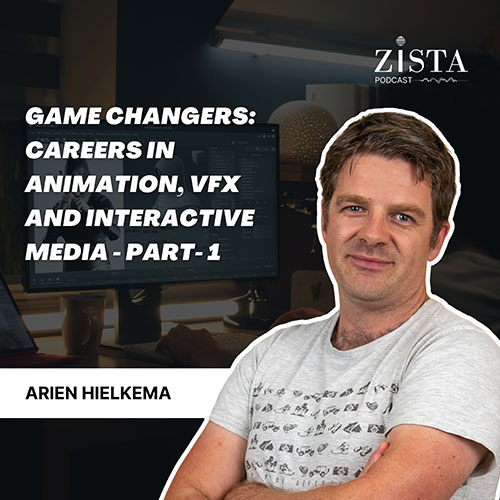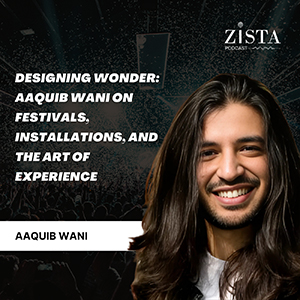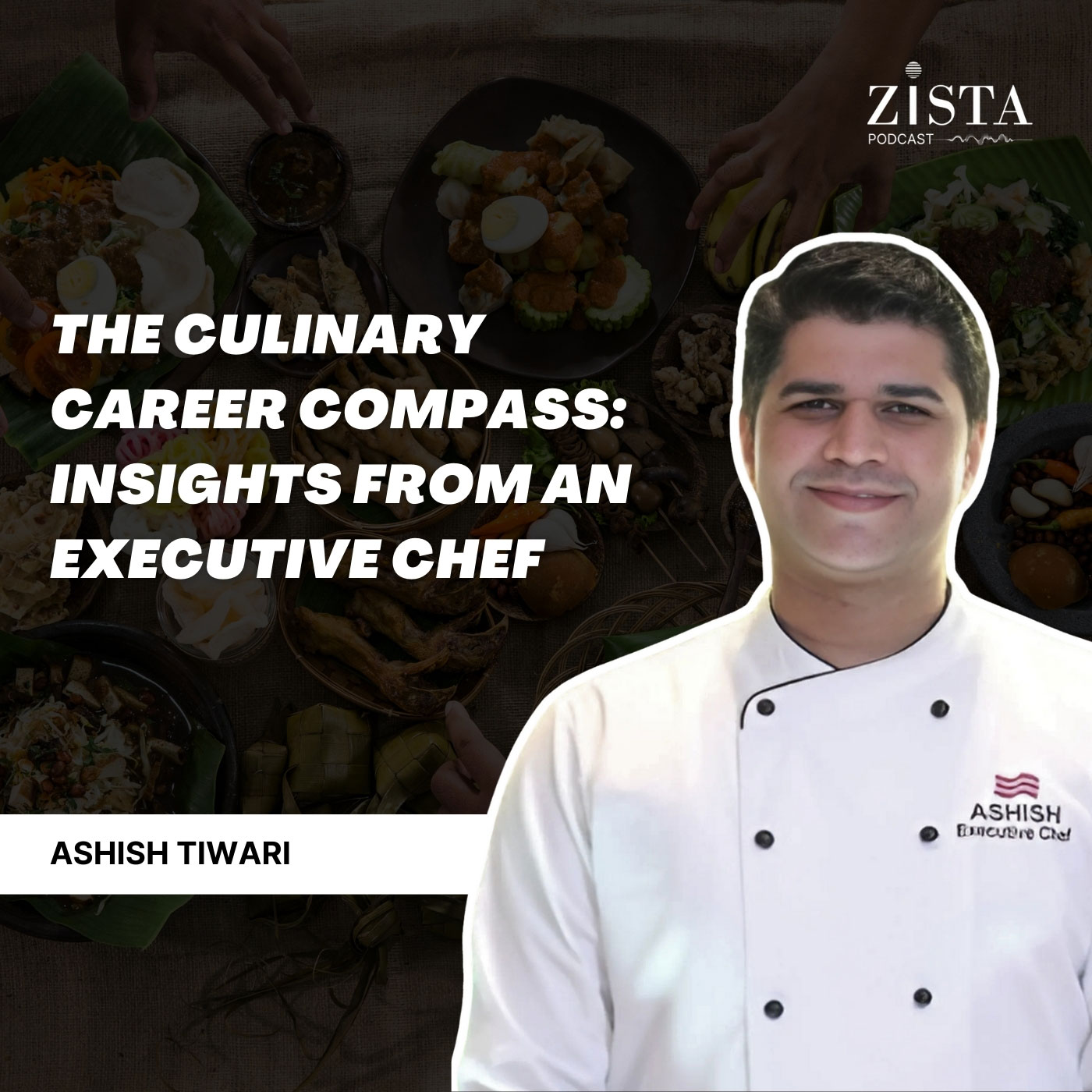The Art & Science of Food Styling and Photography
Join us as we explore the fascinating world of food styling and photography on the latest episode of The Zista Podcast with Michael Swamy!
As a renowned chef, food stylist, travel photographer, and author, Michael shares his insights on what it takes to make it in this niche field within the world of culinary arts.
In this podcast, Michael shares his insights on the techniques and tools that aspiring professionals can use to excel in the world of food styling and photography. Whether you’re a student or a seasoned professional, this podcast is sure to inspire you to take your skills to the next level.
Welcome to the latest episode of The Zista Podcast, where we explore the art and science of food styling and photography with the one and only Michael Swamy. Michael is a renowned chef, food stylist, travel photographer, and author based in Mumbai. He honed his culinary skills at the prestigious Le Cordon Bleu in London, earning a degree that would pave the way for his illustrious career.
With his innovative techniques, keen eye for detail, and extensive experience, Michael has become a sought-after consultant for Indian wildlife resorts, curated food festivals, and conducted food styling and photography workshops in India and abroad. As the author of several cookbooks, including the popular ‘Masala Dabba’ and ‘The Easy Guide to Pairing Indian Food with Wine,’ Michael has mastered the art of creating stunning food visuals that perfectly capture the essence of the dish.
Whether you’re a student looking to break into the industry or a seasoned professional eager to take your food styling skills to the next level, this episode is a game-changer.
Key takeaways
- Learn the basics of photography and lighting techniques to become a master of the camera.
- Gain a background in culinary arts to understand how food interacts with different elements and how to plate it.
- Stay up-to-date with the latest trends and techniques in food styling to maintain expertise in the field.
- Communicate with clients to understand their expectations and offer creative suggestions that align with their vision.
- Collaborate effectively with photographers and other team members to achieve the desired outcome.
Q: How did Michael develop an interest in food styling and photography?
Michael’s interest in photography began when he received his first camera in grade 8, which he upgraded to a DSLR by grade 12. He was drawn to photography because of the need to be precise and selective with the number of images taken, which taught him the importance of making every shot count. As he watched National Geographic with David Attenborough, Michael became fascinated with photography and the documentation of food culture. His mother recognized his interest and advised him to become a chef first, which taught him to understand his subject before photographing it. This lesson was essential in his journey to becoming a food stylist and photographer, and it has stayed with him throughout his career as a reminder that knowing your subject is crucial to producing what you want.
Q: What are some tools and techniques that students can use for food styling and photography?
According to Michael, the first tool you need is a great camera, which you must learn to master. This involves reading the manuals and familiarizing yourself with all the camera’s features and settings, so you can be in control of the camera rather than the other way around. The second important technique is lighting, which is essential to all photography, including food photography. Michael recommends studying natural light, such as how the sun creates light and shadow at different times of the day. Learning to replicate natural lighting with strobe lights is also essential for creating great food photography.
Q: How does one keep up with the latest trends in food styling?
According to Michael, in the 1990s, the primary sources of information were cookery books and magazines since the internet was not yet available. At that time, food photography was still in its early stages, so he started learning from photographers and food stylists while attending Le Cordon Bleu. He then applied this knowledge to his work and shared it with his students at the Catering College. By staying up-to-date with the latest trends and techniques in food styling, Michael has been able to maintain his expertise and create visually stunning food photography.
Q: How do you plan and prepare for a food photography shoot?
Michael says that the planning starts almost two or three days in advance where you sit with a client and discuss and actually sketch out on a piece of paper what the client wants before you even get to the day of the shoot. So, you draw rough sketches of the kind of crockery you are going to need, how the food is going to be plated, and in today’s day and age you pull off images from the internet to show a client. A lot of times, clients don’t know what they want, so you have to guide them and show how their food can look better. Even when Michael is working with photographers, he tells them to capture shots using their own sensibility and then shoot his way, so there are two different takes rather than saying you want something copied.
Q: When it comes to food photography, how do you balance your creative vision versus what a client is expecting?
Michael suggests that you first shoot what the client wants and then shoot the way you want to do it. This way, the client gets what they asked for and you also get to showcase your creativity. Sometimes, the client may even be happy with both shots and choose to use them both. However, it’s important to stick to the brief and make sure that the final product fits within the client’s expectations.
Q: In the course of your career, which projects have stood out for you the most?
A: Michael shares that one of the most memorable projects he worked on was the Kellogg’s shoots where they worked with a lot of kids. He recalls that dealing with kids and food in the same shot was quite challenging, as kids tend to be unpredictable and it was a task to get them to sit still. However, managing the chaos of the situation was what made it memorable for Michael. He explains that the external factors other than just shooting the food, such as managing the mood swings of the models and capturing the food within a certain time frame, all add to the overall experience of the shoot.
Q: What skills and traits are necessary for students to succeed in a career in food styling and photography? Do they need a background or training in a specific subject area?
Michael shares that it’s very important to study to be a chef first because you need to know how food will react with the elements, like harsh lighting, sunlight or winter time. It’s essential to gain knowledge of art and imbibe art as an emotion because, after all, it’s an emotion that you are going to be conveying to the viewer. So, with food, everything is an emotion. As a photographer, you need to know how to capture emotion, and as a chef, you need to know how to put that emotion on a plate. You also need to know how to use lighting to create that emotion for somebody who’s possibly 5000 miles away, since the viewer has no connection with either you or the stylist or the photographer. So, it’s crucial to learn the technique of how to import that emotion into photography and how to evoke a feeling out of the viewer. All these skills and traits are important for a student who wants to pursue food styling or photography as a professional career.




